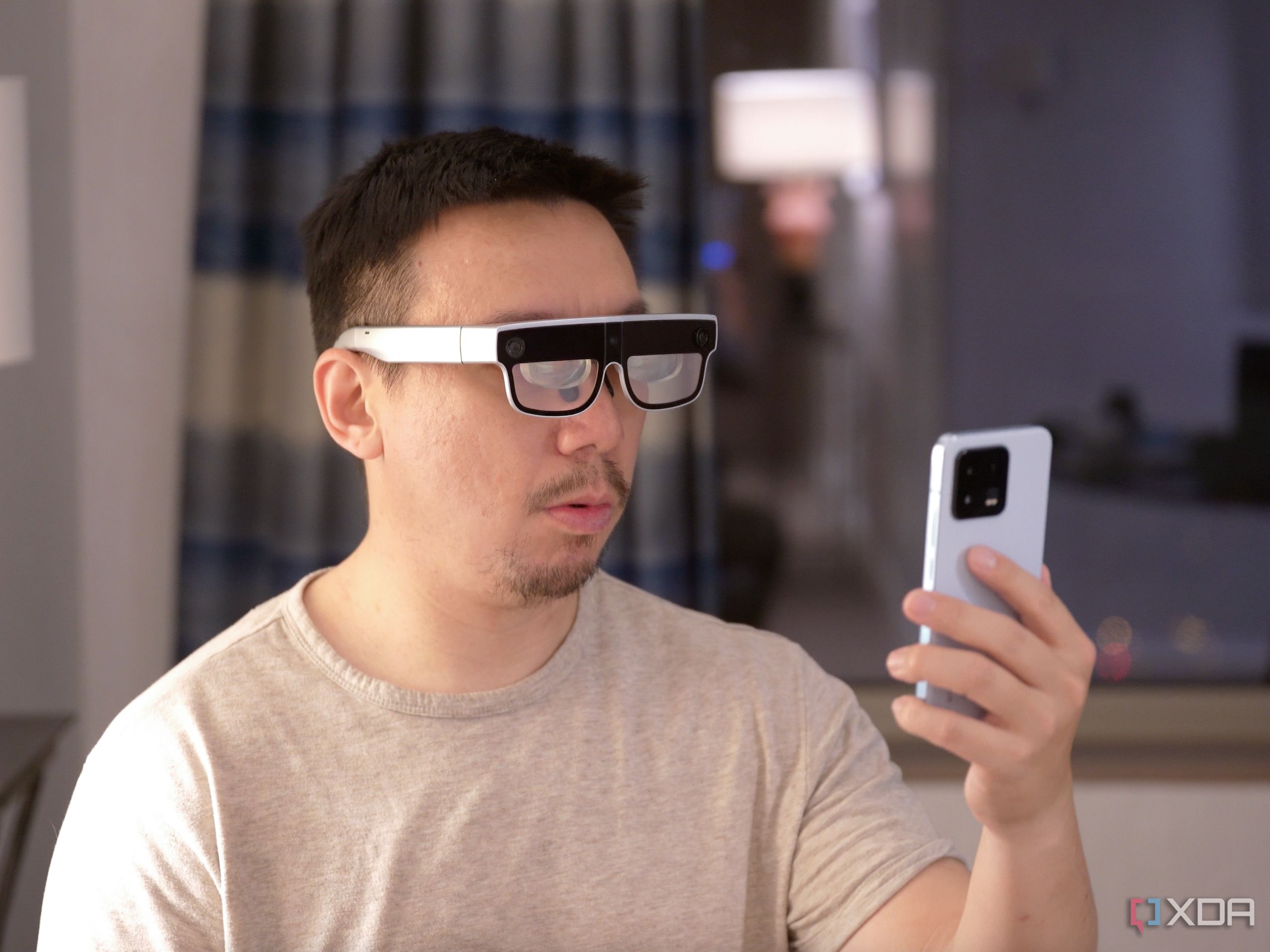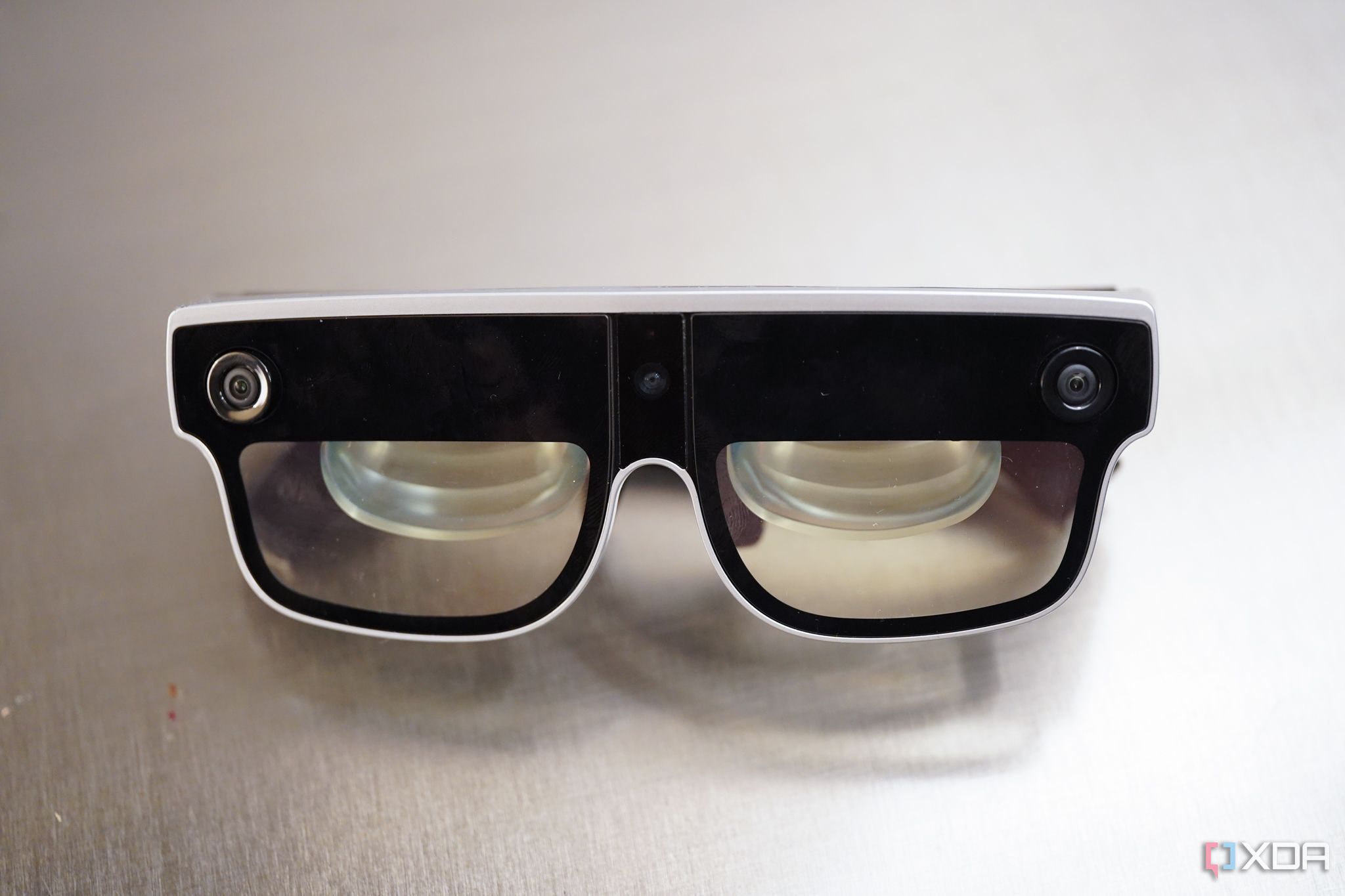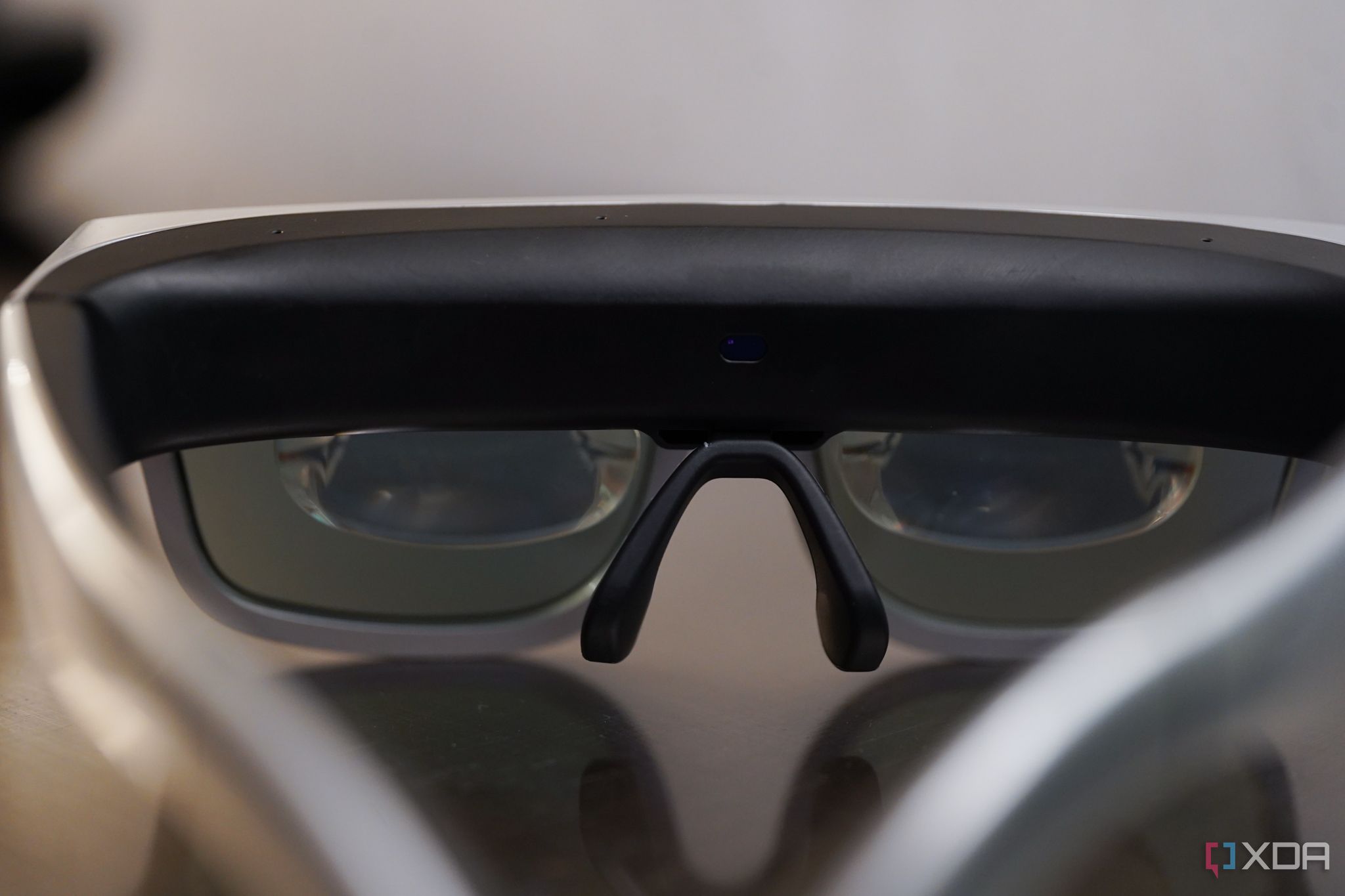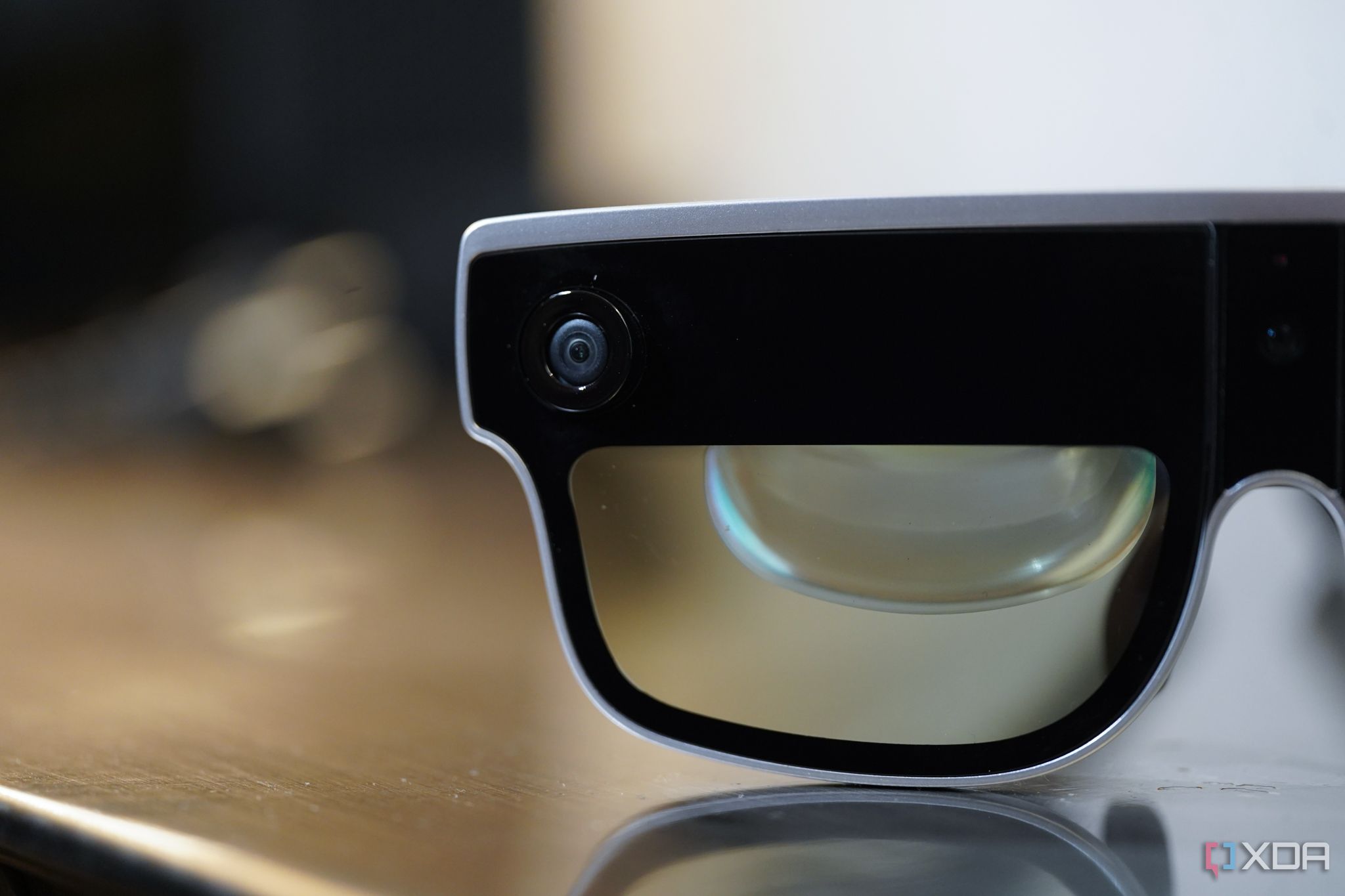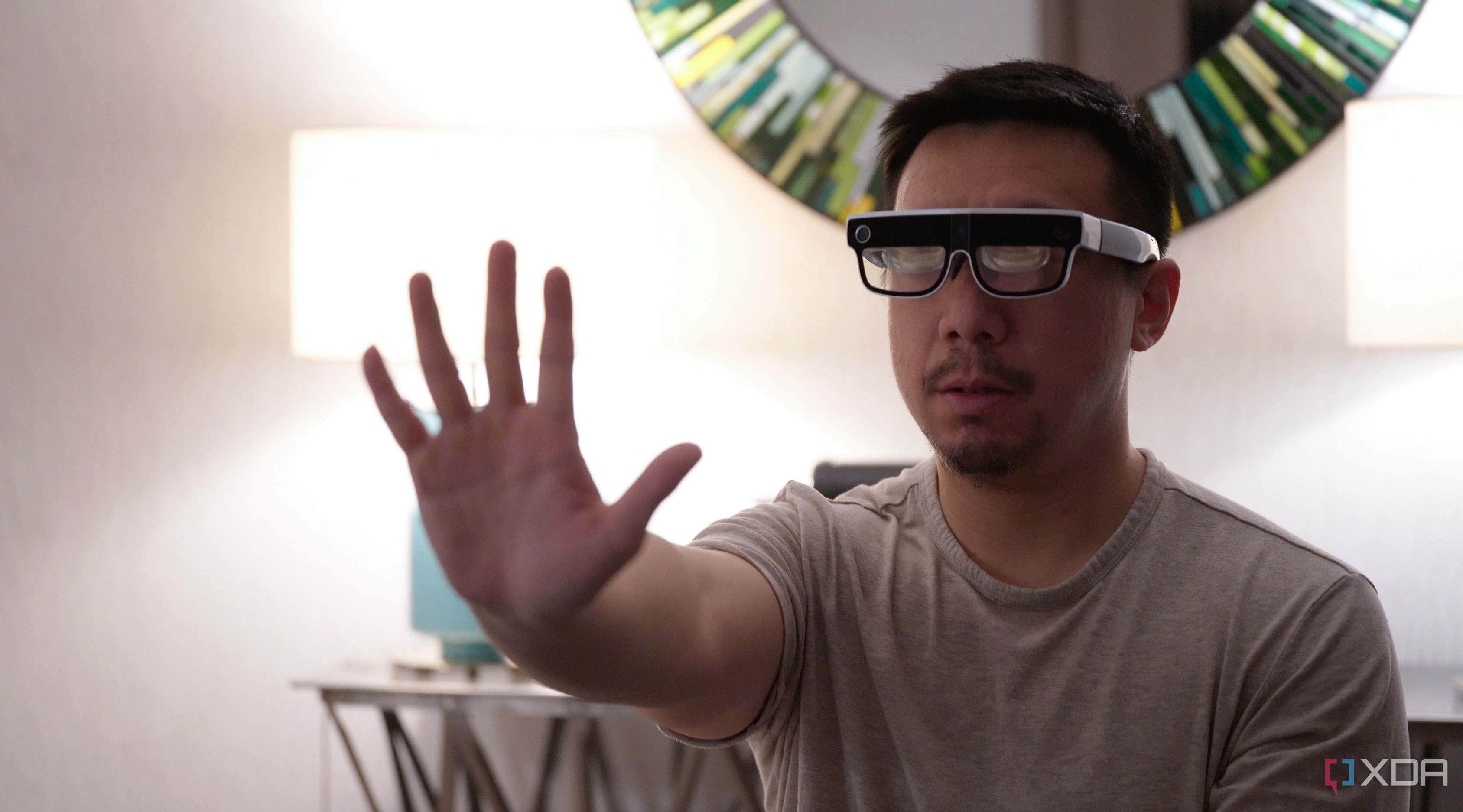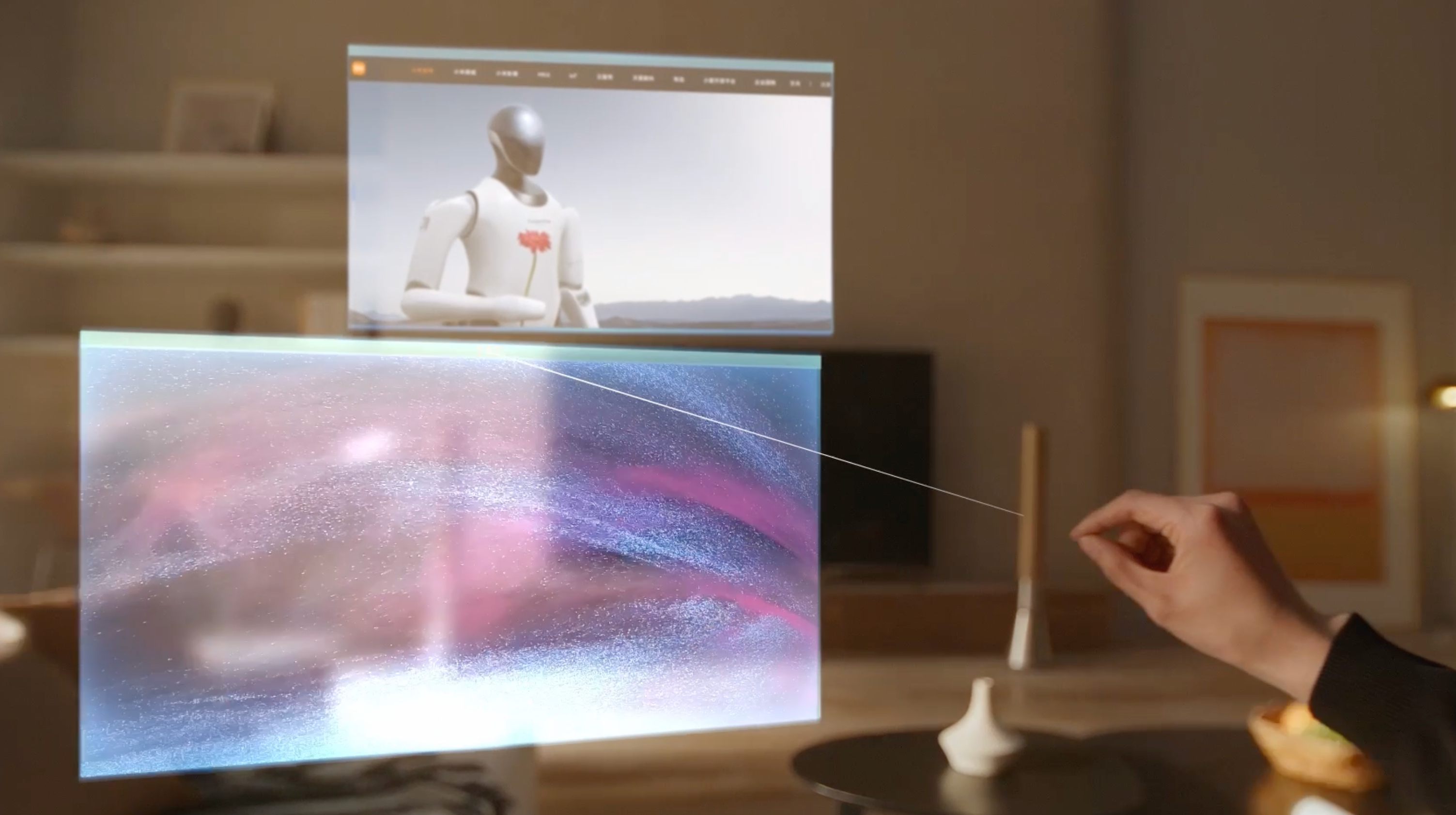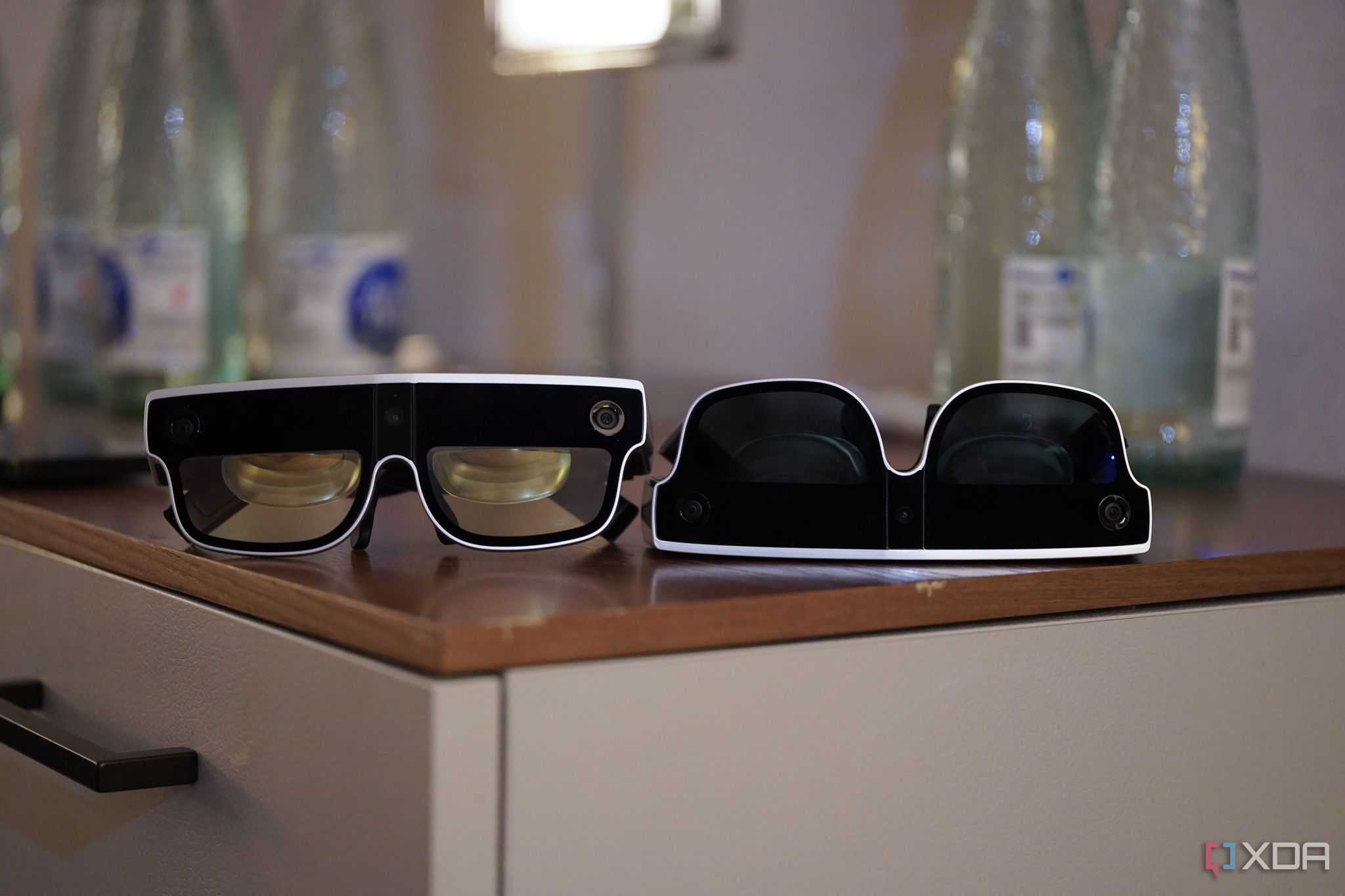Mobile World Congress is an exciting trade show for mobile enthusiasts because it's not just a launching ground for commercial-ready products, but also a place where some of the world's top tech brands show off prototypes or ideas for future products. And while Xiaomi just held an actual launch event for its Xiaomi 13 series two days ago, it had another surprise announcement today: a pair of augmented reality glasses with more advanced technology than any existing AR glasses currently on market.
Xiaomi gave me an exclusive closed-door demo of the product a few days ago — according to Xiaomi reps, I'm the only media person who got to touch and try the prototype before announcement — and I came away wishing it was an actual product launching soon.
Hardware
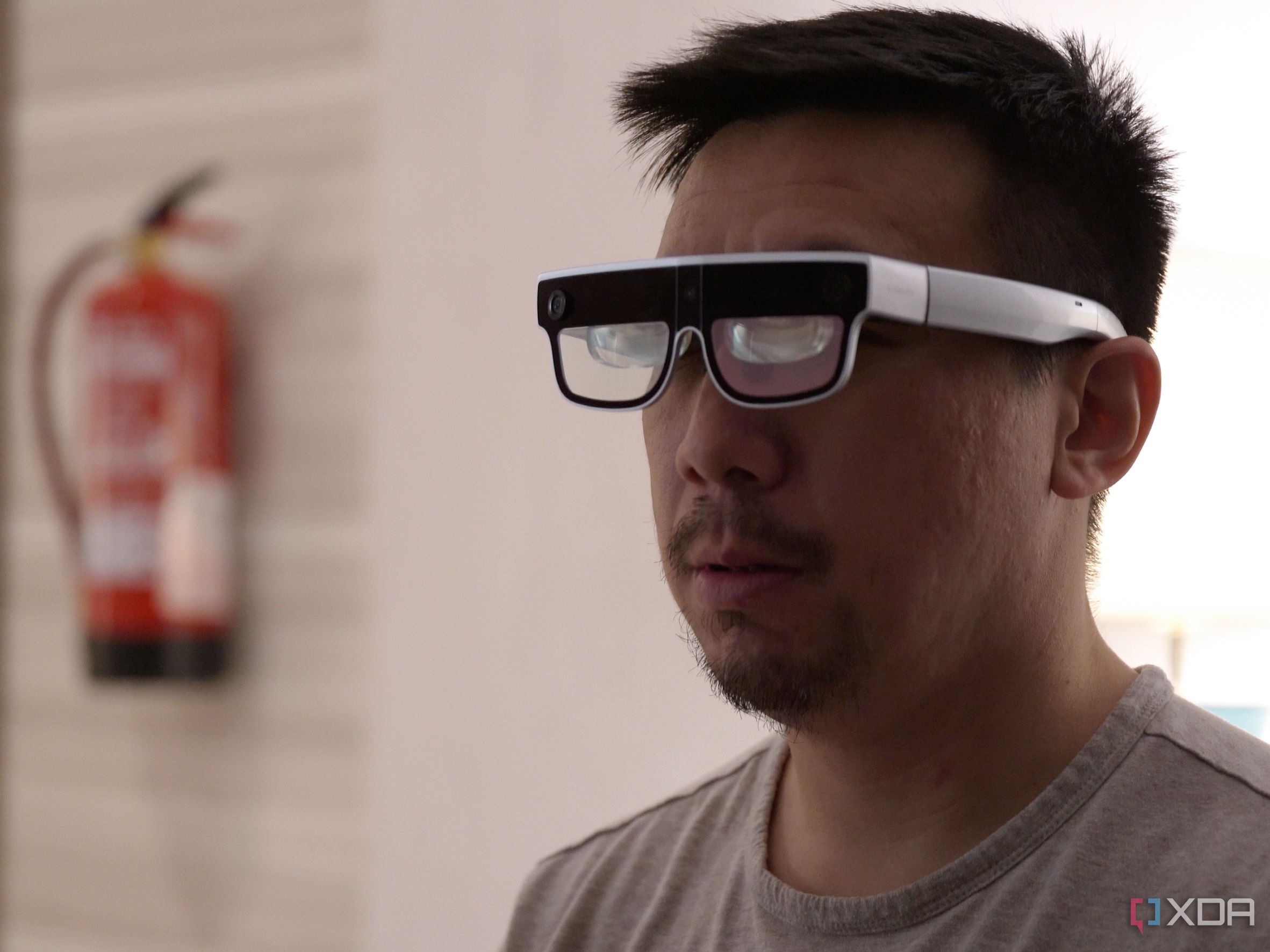
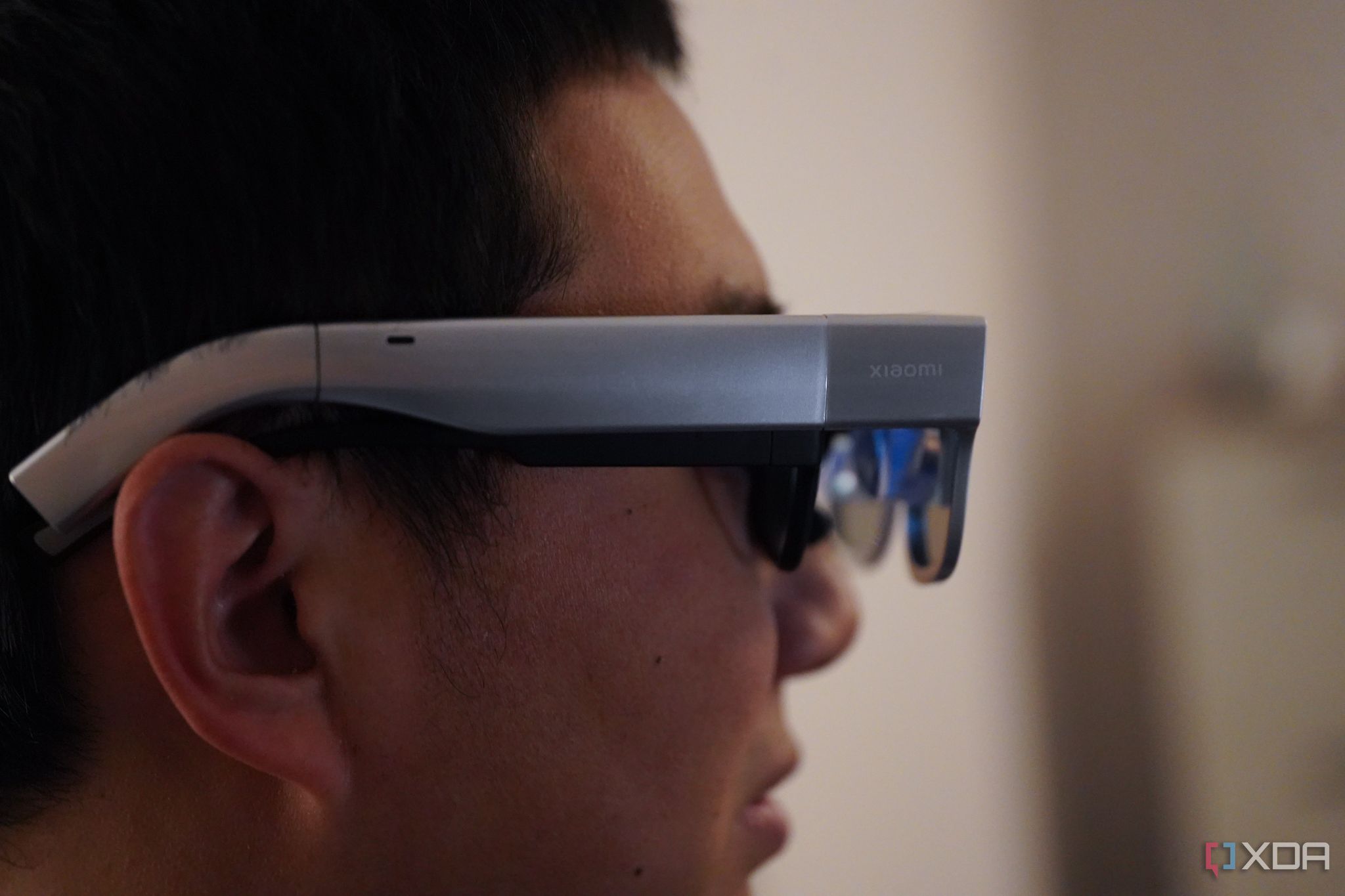
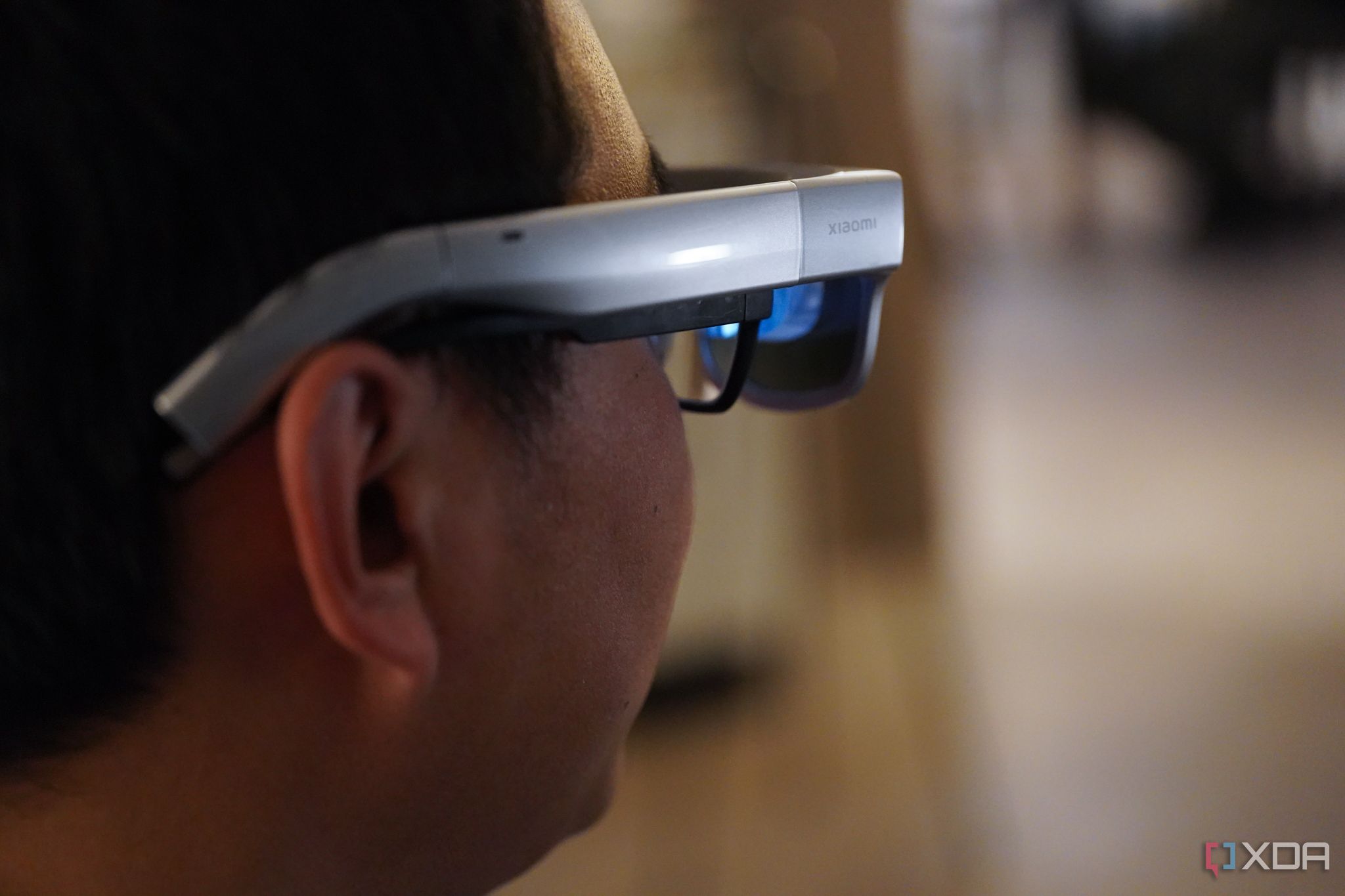
The official name of the product is Xiaomi Wireless AR Smart Glass Explorer Edition, and it looks like an oversized pair of Terminator sunglasses with a silver finish instead of being all black. The glasses feature a pair of Micro-OLED screens — one for each eye — that pump out full HD visuals at 1,200 nits of brightness. There are three forward-facing cameras on the front of the glasses that are used to map the environment immediately in front of the wearer.
Considering its relatively large size and the cutting-edge components inside, the glasses are lightweight at 126g. Xiaomi says it managed to keep the weight low by using lightweight materials like carbon fiber, magnesium alloy, and a self-developed silicon-oxygen anode battery that's smaller than a typical lithium-ion battery.
The glasses run on Qualcomm's Snapdragon XR2 Gen 1 chip. It has no on board storage, so it must be connected to a host device (during our testing, we used a Xiaomi 13) for use. So far, everything I described has already been done before by existing commercial products like the nReal Light or Rokid Air. So what sets Xiaomi's glasses apart?
What can the Xiaomi Wireless AR Smart Glass do?
As the name gives away: the glasses are entirely wireless. It connects to a smartphone via the company's "proprietary low-latency communication link" (an engineer tells me it's a combination of WiFi and Bluetooth), and Xiaomi advertises a latency of just 50ms, which is fast enough that you can't quite perceive noticeable lag. I wore the glasses for over 20 minutes scrolling through TikTok, Instagram, and watching YouTube videos, and I couldn't detect lag nor any image quality drop off.
This alone blew me away. I have tested several AR glasses, including the aforementioned nReal Light, Rokid Air, plus nReal Air and TCL NXTWEAR S, and I actually use the nReal Air every day. All of those require cable connection, and the wire can get in the way, especially when I'm using the glasses while laying in bed or in a cramped airplane seat.
At its most basic form, Xiaomi's smart glass can already do the same thing the nReal Air excels at — give me a wearable screen that floats in front of my face — without any wires.
But Xiaomi's glasses can do more than just play videos. When I reviewed both the nReal Air and TCL NXTWEAR S for XDA, I concluded that although they were advertised as AR glasses, they were ultimately best used as just a wearable display, because the AR applications just didn't work too well.
Even in its prototype stage, Xiaomi's AR applications are already far more advanced. During the demo Xiaomi reps showed off three AR tests. The first was running an interactive virtual desktop where I could open multiple windows and have them "map" onto the real world environment in front of me. I could control the windows — move it around, or resize it — via using the connected phone screen as a trackpad, or I could stick out my arm and use hand gestures to physically move the windows. When I stuck my arm out with palms facing outward, a laser beam projects from my palm, which I can use as a pointer. I can use a finger pinch motion to "grab" a window and move it around.
The second demo was an AR shooting game, in which I could plant a virtual machine gun station on a flat surface (for my demo, I used a table), and I had to shoot these weird-looking animals walking towards me. I could control aiming with the phone or my hands. Finally, the third demo had me jumping into a virtual Xiaomi Home UI where I could use my hand and finger to flick a virtual switch to turn on/off a real life Xiaomi lamp that was on sight during the demo.
Obviously, it's not possible for me to show exactly how the AR visuals looked to my eyes in photos, so the best I could do was stick a phone behind the glasses to capture a portion of what my eyes would see. I can say that Xiaomi's marketing slides and promo videos are a fair representation of what I saw.
The Xiaomi Wireless AR Smart Glass also features an electrochromic lenses that can turn black with the press of a button. The idea is that, when you're wearing the glasses for AR content, you want the lenses to be transparent, so you can see the real world. But when you're watching a movie, you may want to have the content play over a black screen for more immersion. Existing AR glasses from nReal or TCL all have a physical lens cover that you snap onto the glasses. Xiaomi's doesn't need a physical cover.
A prototype that feels ready for release
Overall, the Xiaomi AR glasses worked as advertised and the demo went smoothly without many hiccups. Everything from the visual floating in front of my face, to the sensors picking up my hand/arm gestures worked well enough. Even if the AR applications are limited, I would want to own a pair right now just for the ability to watch movies or scroll through Instagram and TikTok on a wearable display not tethered by a cable.
Xiaomi declined to say why this is a prototype right now when the tech seems to work so well. If I have to guess, I'd suspect it could be battery life or cost. During our 30-minute demo session the glasses ran out of juice and had to be charged. Maybe there's no way to put a large enough battery without drastically increasing weight or bulk. The other theory could be that Xiaomi wants to wait until these glasses can be manufactured at a lower cost before releasing. Whatever the case, I am excited for the day when these glasses are mass production ready. I already love the nReal Air and carry it with me on every trip. These Xiaomi glasses are like a futuristic version of that.

